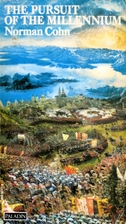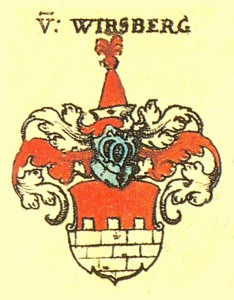2019-05-12
An Interesting Perspective

Musings on biblical studies, politics, religion, ethics, human nature, tidbits from science


A number of readers have questioned my own questioning of a popular belief and claim by Richard Carrier that
Palestine in the early first century CE was experiencing a rash of messianism.
I suggest on the contrary that evidence for popular messianism does not appear until the Jewish War in the latter half of the first century. See post + comment + comment and links within those comments to earlier posts. Certainly popular counter-cultural leaders prior to that time (but still well after the time of Jesus) did not imitate any known Danielic or Davidic notion of a messiah expected to challenge Rome.
In this post I will address some general background information that we have about popular messianic movements. If we are to be good Bayesian thinkers then we need to set out as much background knowledge as we can before we begin. This post will put two or three items on the table for starters. Other background data has been covered to some extent in the above linked “comment(s)” and “post”.
 A classic study of popular millennial movements is Norman Cohn’s The Pursuit of the Millennium . After surveying such movements in the Middle Ages Cohn concludes:
A classic study of popular millennial movements is Norman Cohn’s The Pursuit of the Millennium . After surveying such movements in the Middle Ages Cohn concludes:
“They occurred in a world where peasant revolts and urban insurrections were very common and moreover were often successful. . . .
“Revolutionary millenarianism drew its strength from a population living on the margin of society – peasants without land or with too little land even for subsistence; journeymen and unskilled workers living under the continuous threat of unemployment; beggars and vagabonds – in fact from the amorphous mass of people who were not simply poor but who could find no assured and recognized place in society at all. These people lacked the material and emotional support afforded by traditional social groups; their kinship-groups had disintegrated and they were not effectively organized in village communities or in guilds; for them there existed no regular, institutionalized methods of voicing their grievances or pressing their claims. Instead they waited for a propheta to bind them together in a group of their own.
“Because these people found themselves in such an exposed and defenceless position they were liable to react very sharply to any disruption of the normal, familiar, pattern of life. Again and again one finds that a particular outbreak of revolutionary millenarianism took place against a background of disaster . . . ”Excerpt From: Cohn, Norman. “The Pursuit of the Millennium: Revolutionary Millenarians and Mystical Anarchists of the Middle Ages.” iBooks. (My own bolded highlighting)
Examples of those camel back-breaking disasters and related messianic movements:
Continue reading “Historical Conditions for Popular Messianism — Christian, Muslim and Palestinian”

| By the roots of my hair some god got hold of me. I sizzled in his blue volts like a desert prophet. — Sylvia Plath, quoted by Charles Camerson in So: How Does It Feel at World’s End?, an exploration into the eschatological lure of ISIS. |
Charles Cameron is blogging about a book of his that is hopefully will be published soon: Jihad and the Passion of ISIS: Making Sense of Religious Violence. The first of these blog posts is On the horrors of apocalyptic warfare, 1: its sheer intensity.
Cameron builds on a number of works that I have posted about here on Vridar, so I am looking forward to his own contribution. He writes:
Vridar posts —
We now have, I believe, a strong understanding of the Islamic State and its origins in such books as Stern & Berger, ISIS: The State of Terror, Jason Burke, The New Threat, Joby Warrick, Black Flags: The Rise of ISIS, and Weiss & Hassan, ISIS: Inside the Army of Terror. Delving directly into the key issue that interests me personally, the eschatology of the Islamic State, we have Will McCants‘ definitive The ISIS Apocalypse. My own contribution will hopefully supplement these riches, and McCants’ book in particular, with a comparative overview of religious violence across continents and centuries, and a particular focus on the passions engendered in both religious and secular movements when the definitive transformation of the world seems close at hand.
What follows is the first section of a four-part exploration of the horrors of apocalyptic war.
Cameron draws upon a dramatically colourful Winston Churchill account to convey the power of the Mahdi on the imaginations of followers in his day.
In his second post On the horrors of apocalyptic warfare, 2: to spark a messianic fire he encapsulates the sense of apoclyptic fervour in a passage from another book on my “to-read list”, Richard Landes’ Heaven on Earth: The Varieties of the Millennial Experience:
For people who have entered apocalyptic time, everything quickens, enlivens, coheres. They become semiotically aroused — everything has meaning, patterns. The smallest incident can have immense importance and open the way to an entirely new vision of the world, one in which forces unseen by other mortals operate. If the warrior lives with death at his shoulder, then apocalyptic warriors live with cosmic salvation before them, just beyond their grasp.
I’m looking forward to the remainder of Charles Cameron’s series.

 It is easy for us to associate apocalyptic and millennial movements with people who are undergoing social or economic stresses, or suffering hostile treatment of some kind. The idea is that apocalyptic fantasies of divine judgment to be followed by a reversal of fortunes in a millennial setting are a compensatory mechanism. But that’s not necessarily so. Not everyone who experiences the stresses of these kinds embraces an apocalyptic cult; moreover, Stephen L. Cook in his book Prophecy & Apocalypticism lists ten historical millennialist groups or persons from quite well-to-do and relatively comfortable backgrounds. The following come from pages 35 to 40.
It is easy for us to associate apocalyptic and millennial movements with people who are undergoing social or economic stresses, or suffering hostile treatment of some kind. The idea is that apocalyptic fantasies of divine judgment to be followed by a reversal of fortunes in a millennial setting are a compensatory mechanism. But that’s not necessarily so. Not everyone who experiences the stresses of these kinds embraces an apocalyptic cult; moreover, Stephen L. Cook in his book Prophecy & Apocalypticism lists ten historical millennialist groups or persons from quite well-to-do and relatively comfortable backgrounds. The following come from pages 35 to 40.
Where: Europe
When: From the thirteenth century onward
What: millennialists
Who: members of privileged strata of society; less affluent members of intelligentsia; from wealthy, well-established family backgrounds; “idle women from the elite of urban society”
 2. The Wirsberg Brothers
2. The Wirsberg BrothersWhere: Europe
When: 1450’s and 1460’s
What: millennialsts
Who: Brothers Janko and Livin of Wirsberg were millennial catalyst figures even though they were rich and powerful

Where: Florence
When: End of fifteenth century
What: The millennial instruction was taken up as the basis for the civic program of the Florentine republic
Who: Famous civic reformer Savanarola proposed a worldview addressed to political officials, the upper class, as well as the poor.
Where: Calabria
When: Twelfth century Continue reading “You Don’t Have to be Deprived, Suffering or Alienated to be an Apocalyptic Nutter”

The Holy Great One will come forth from His dwelling,
And the eternal God will tread upon the earth, (even) on Mount Sinai,
[And appear from His camp]
And appear in the strength of His might from the heaven of heavens.And all shall be smitten with fear
And the Watchers shall quake,
And great fear and trembling shall seize them unto the ends of the earth.And the high mountains shall be shaken,
And the high hills shall be made low,
And shall melt like wax before the flameAnd the earth shall be wholly rent in sunder,
And all that is upon the earth shall perish,
And there shall be a judgement upon all (men).
Immediately after the tribulation of those days shall the sun be darkened, and the moon shall not give her light, and the stars shall fall from heaven, and the powers of the heavens shall be shaken
And I beheld when he had opened the sixth seal, and, lo, there was a great earthquake; and the sun became black as sackcloth of hair, and the moon became as blood;
And the stars of heaven fell unto the earth, even as a fig tree casteth her untimely figs, when she is shaken of a mighty wind.
And the heaven departed as a scroll when it is rolled together; and every mountain and island were moved out of their places.
And the kings of the earth, and the great men, and the rich men, and the chief captains, and the mighty men, and every bondman, and every free man, hid themselves in the dens and in the rocks of the mountains;
And said to the mountains and rocks, Fall on us, and hide us from the face of him that sitteth on the throne, and from the wrath of the Lamb:
For the great day of his wrath is come; and who shall be able to stand?
What does all this mean? Such apocalyptic had a long heritage, as passages from Enoch (above) and Micah, Jeremiah and Isaiah (below) testify. How did the authors expect readers/hearers to interpret such language?
Again from Richard Horsley, this time from Scribes, Visionaries and the Politics of Second Temple Judea . . .